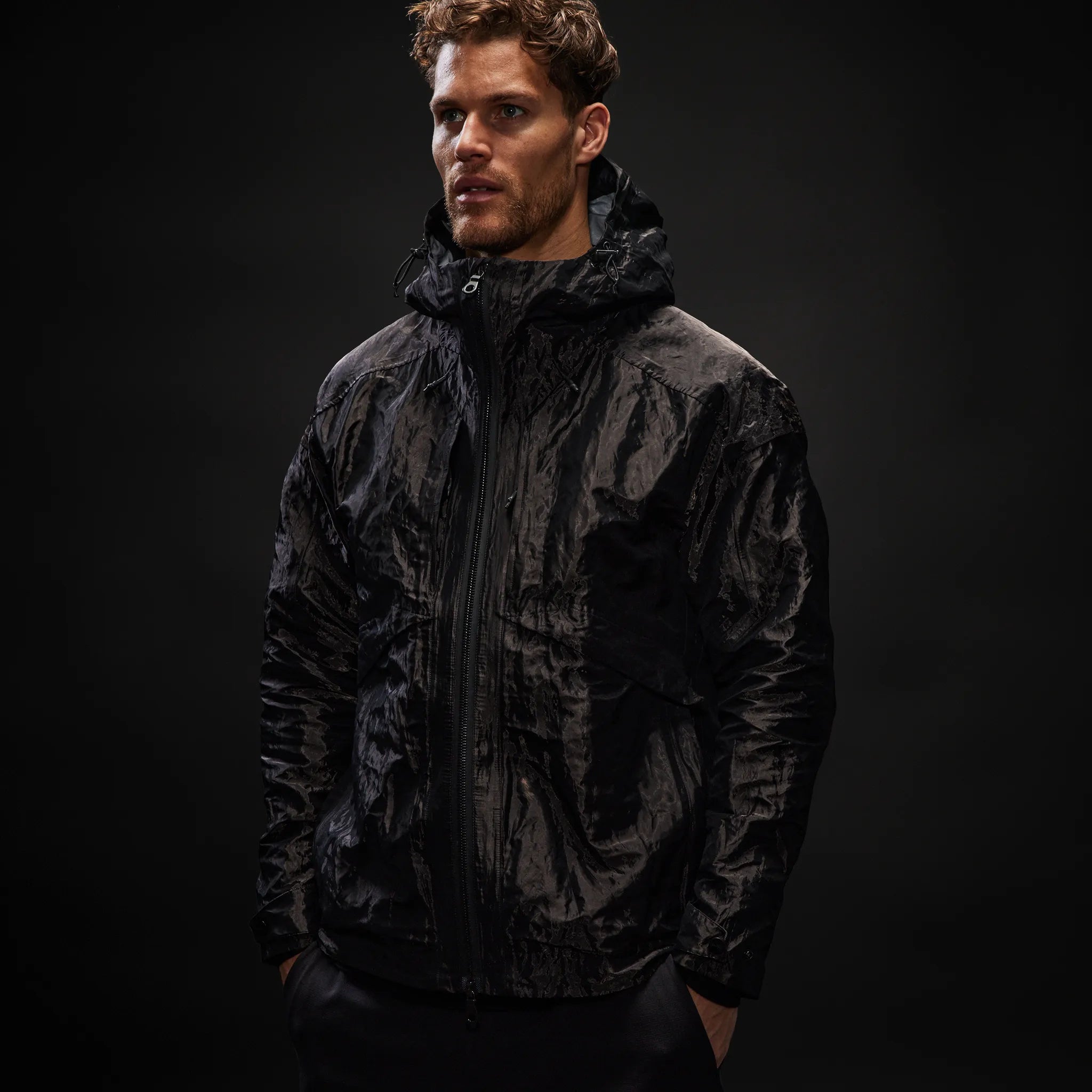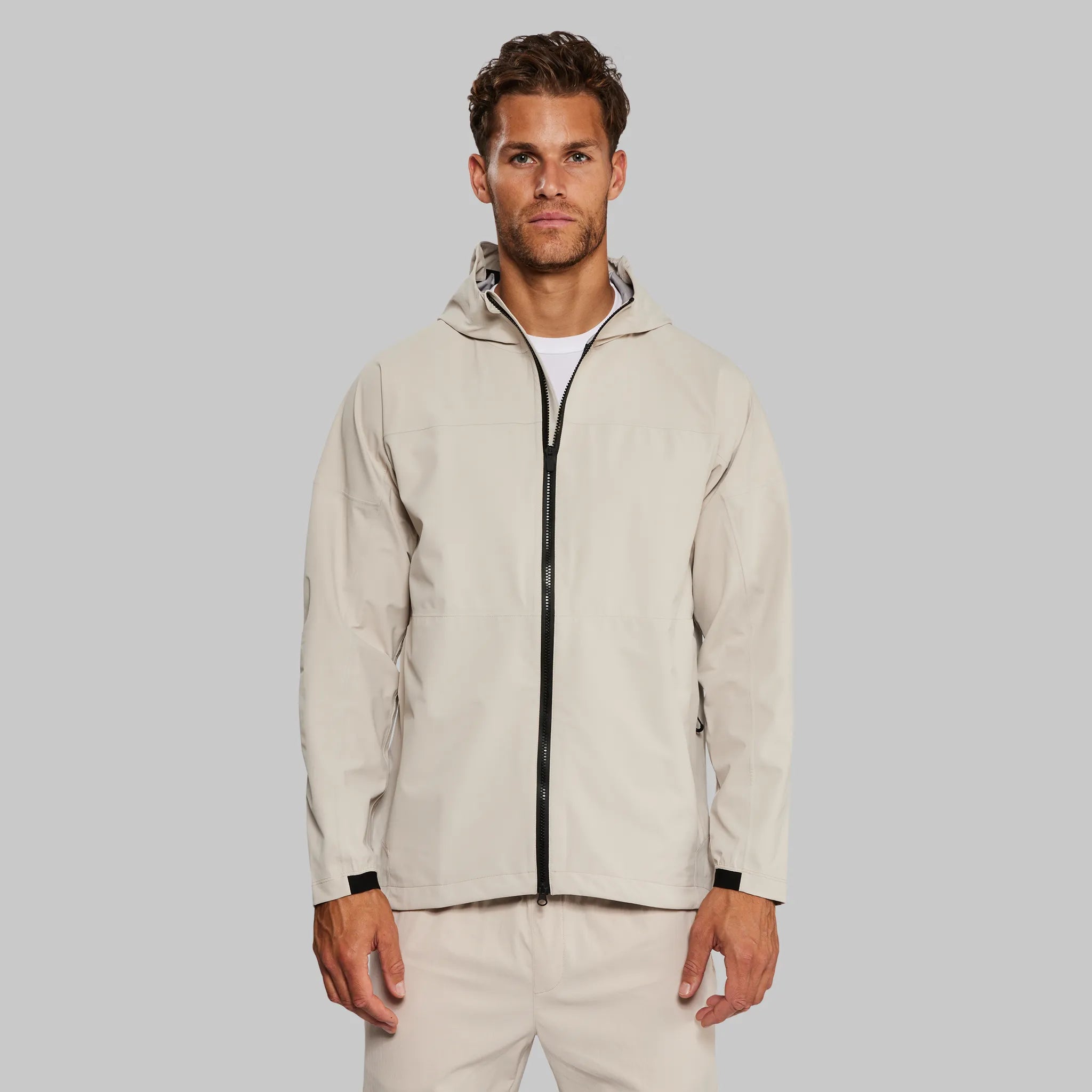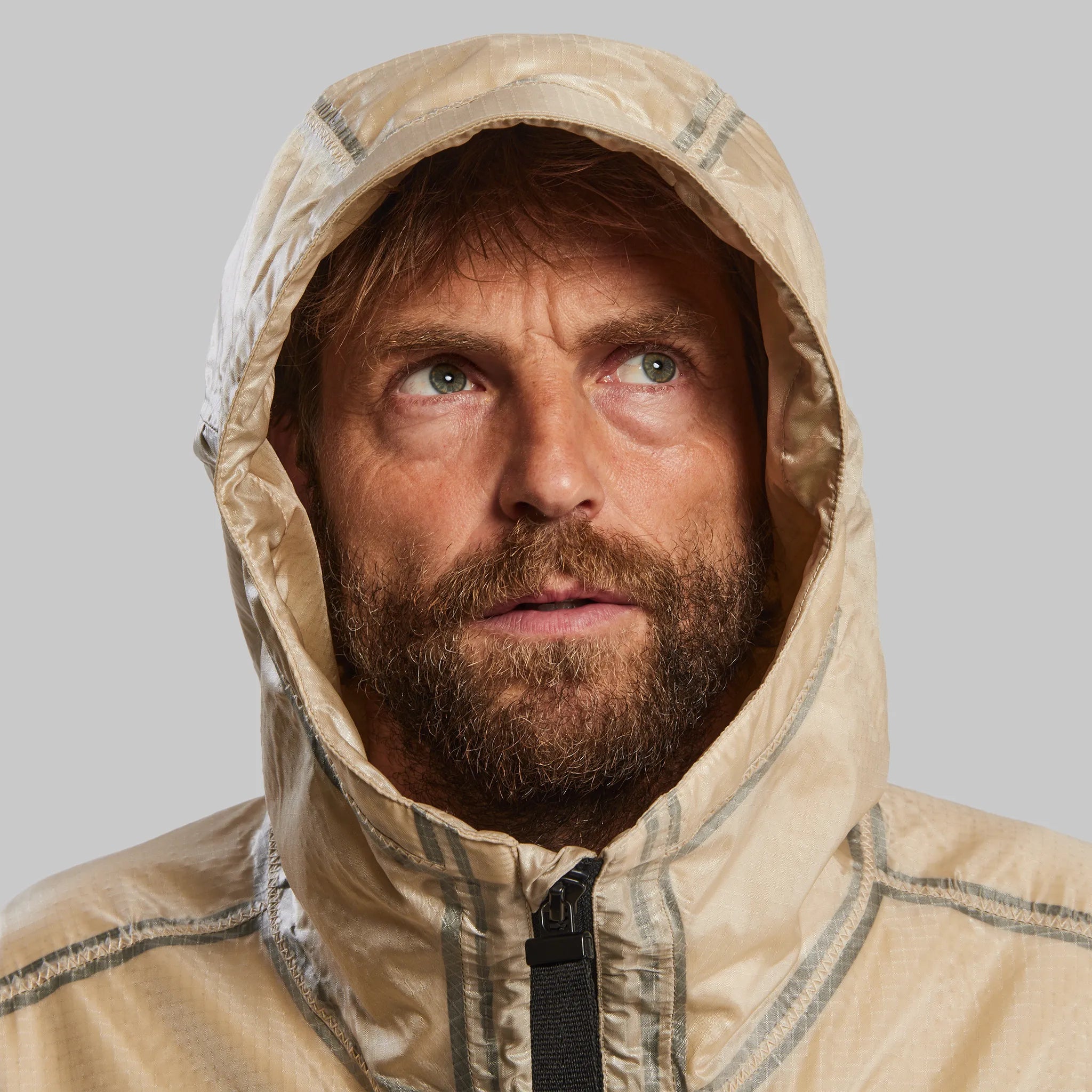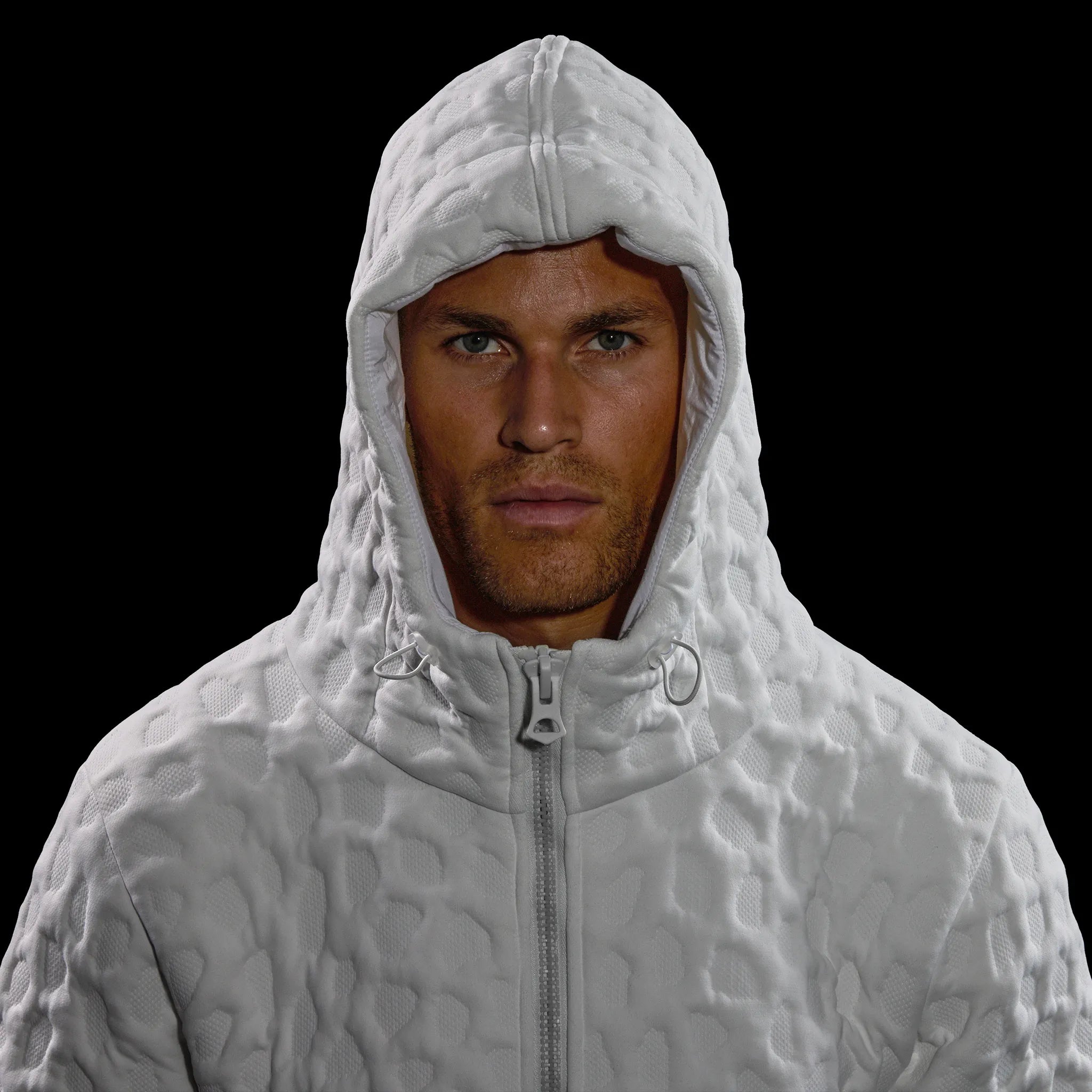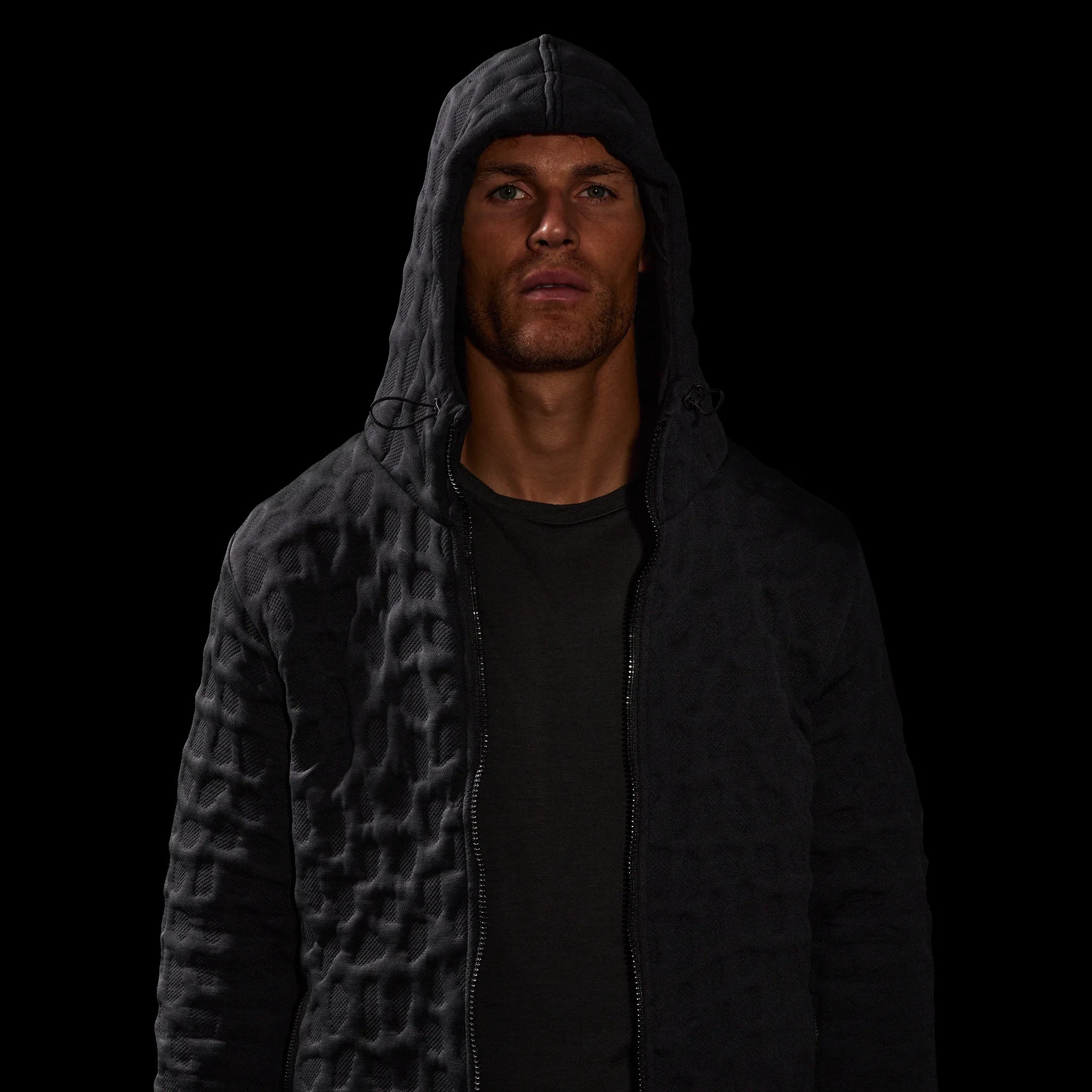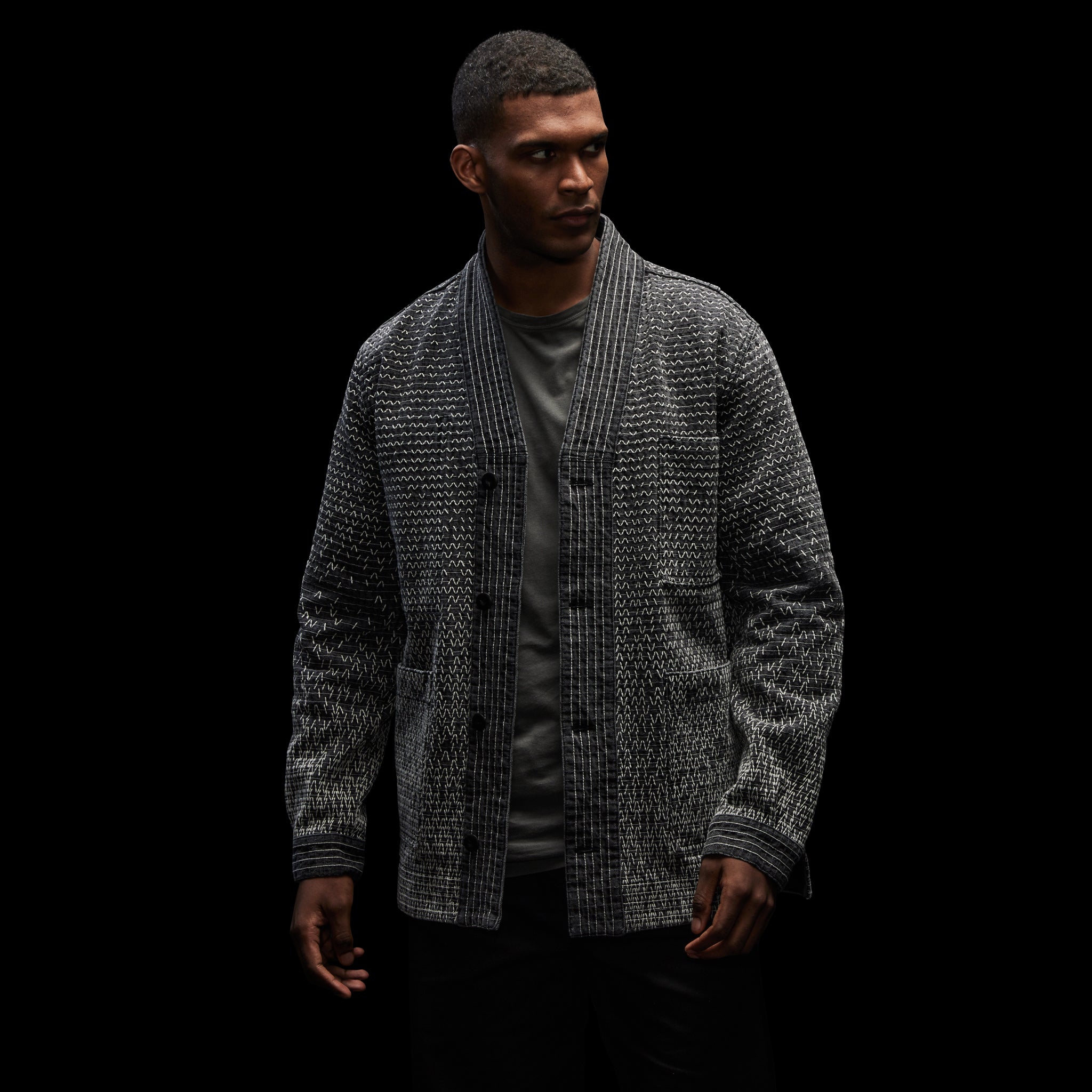Graphene Jacket
Built with the only material in the world with a Nobel prize.

- Three layered material with a graphene core
- Ultra lightweight at 197 grams
- Highly waterproof and breathable
While it’s invisible to the human eye and only a single atom thick, graphene is the lightest, strongest, most conductive material ever discovered. The existence of graphene as a supermaterial was first theorised in the 1940s, but it wasn’t until 2004 that two maverick scientists at the University of Manchester were able to isolate and test it. And in 2010 their work won them the Nobel Prize.
Since then we’ve already built two world firsts with graphene. In 2018 we built the world’s first Graphene Jacket. Then in 2022 we worked with the National Graphene Institute at the University of Manchester to create the Thermal Camouflage Jacket to bring us one step closer to an invisibility cloak.
Now, 5 years after we started working with graphene, we’re getting closer to building a graphene skin. This time the graphene sits at the core of the jacket where it can store and redistribute heat, help regulate your temperature, and reduce humidity next to your body. It’s also highly breathable, highly waterproof, and thanks to the graphene nanoplatelets only being a few atoms thick, weighs just 197 grams.
Technical Details
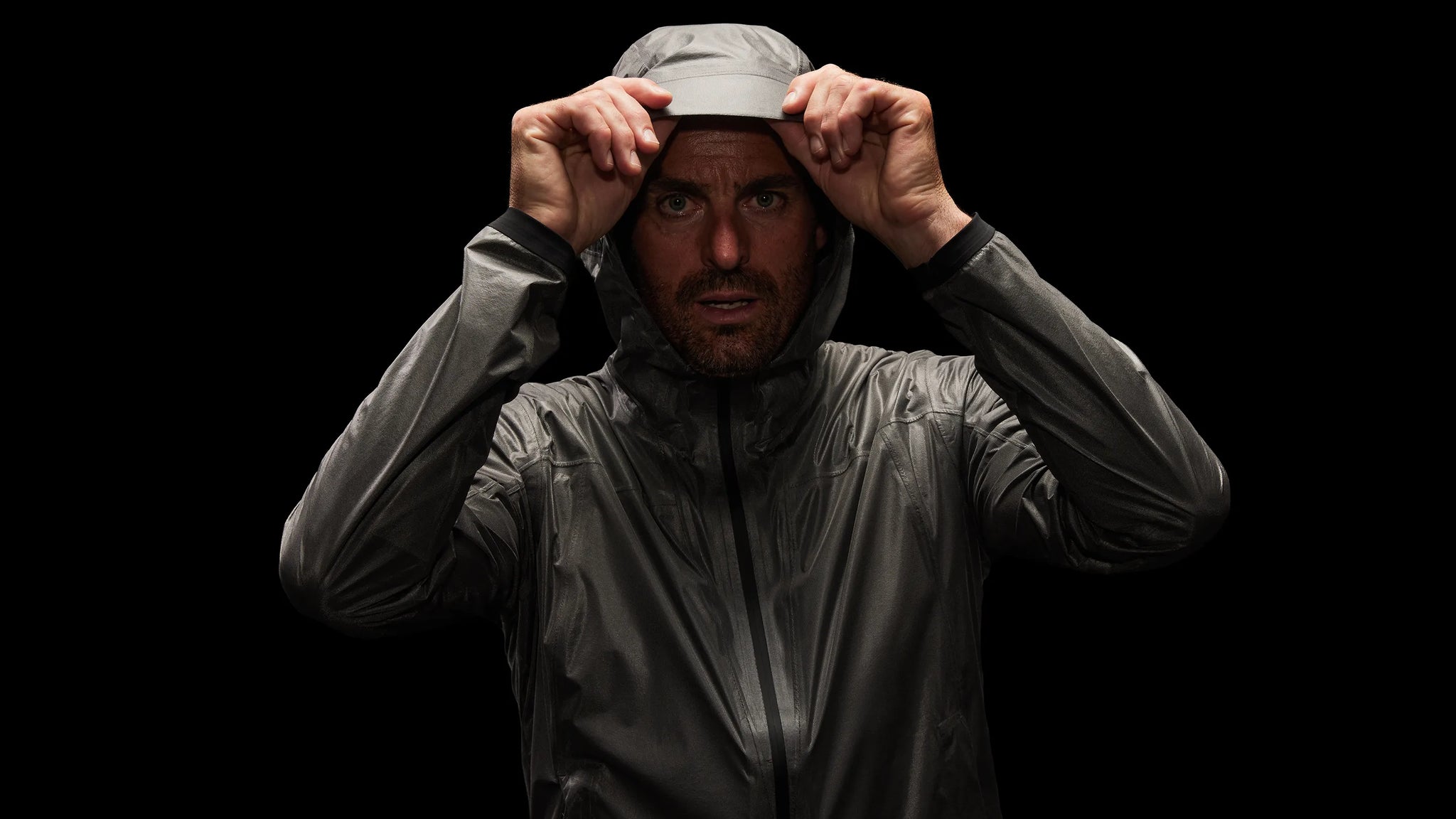

We’ve already built two world firsts with graphene
8 years later in 2018, we built the world’s first graphene jacket. It was an experimental prototype – a reversible jacket with one side coated in graphene and the other side not – so you could literally carry out your own experiments while wearing it. We then spent the next 3 years working with the National Graphene Institute at the University of Manchester using graphene to create the world’s first Thermal Camouflage Jacket – a computer-programmable jacket built with hundreds of layers of graphene that was designed to bring us one step closer to an invisibility cloak.
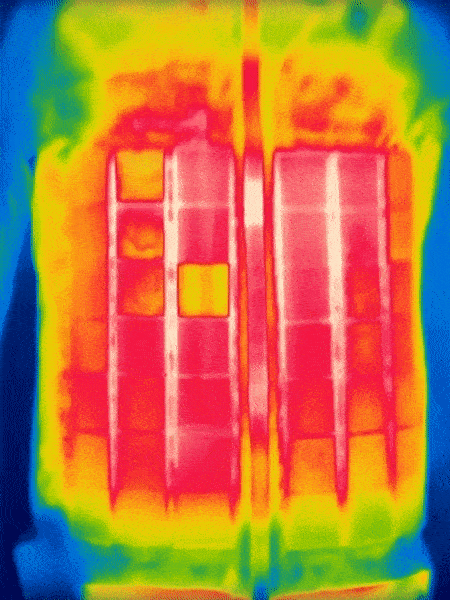
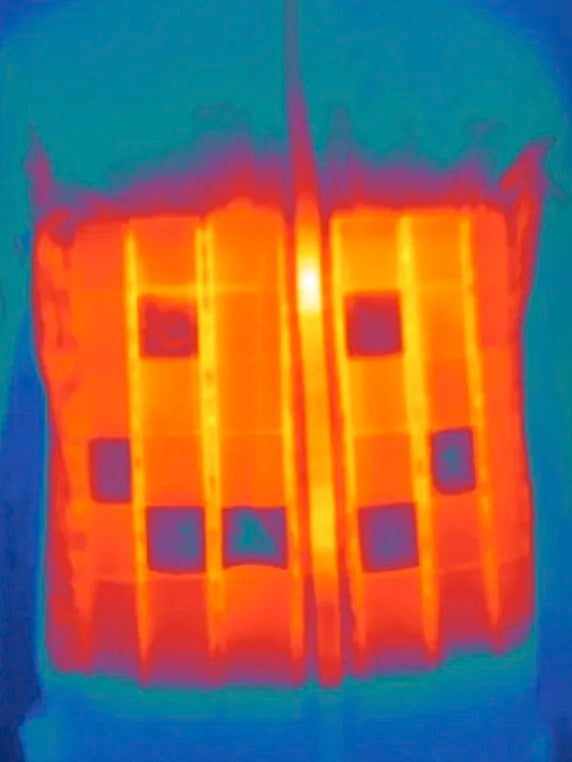
In 2018 we built the world’s first graphene jacket. Then in 2022 we used graphene to bring us one step closer to an invisibility cloak.
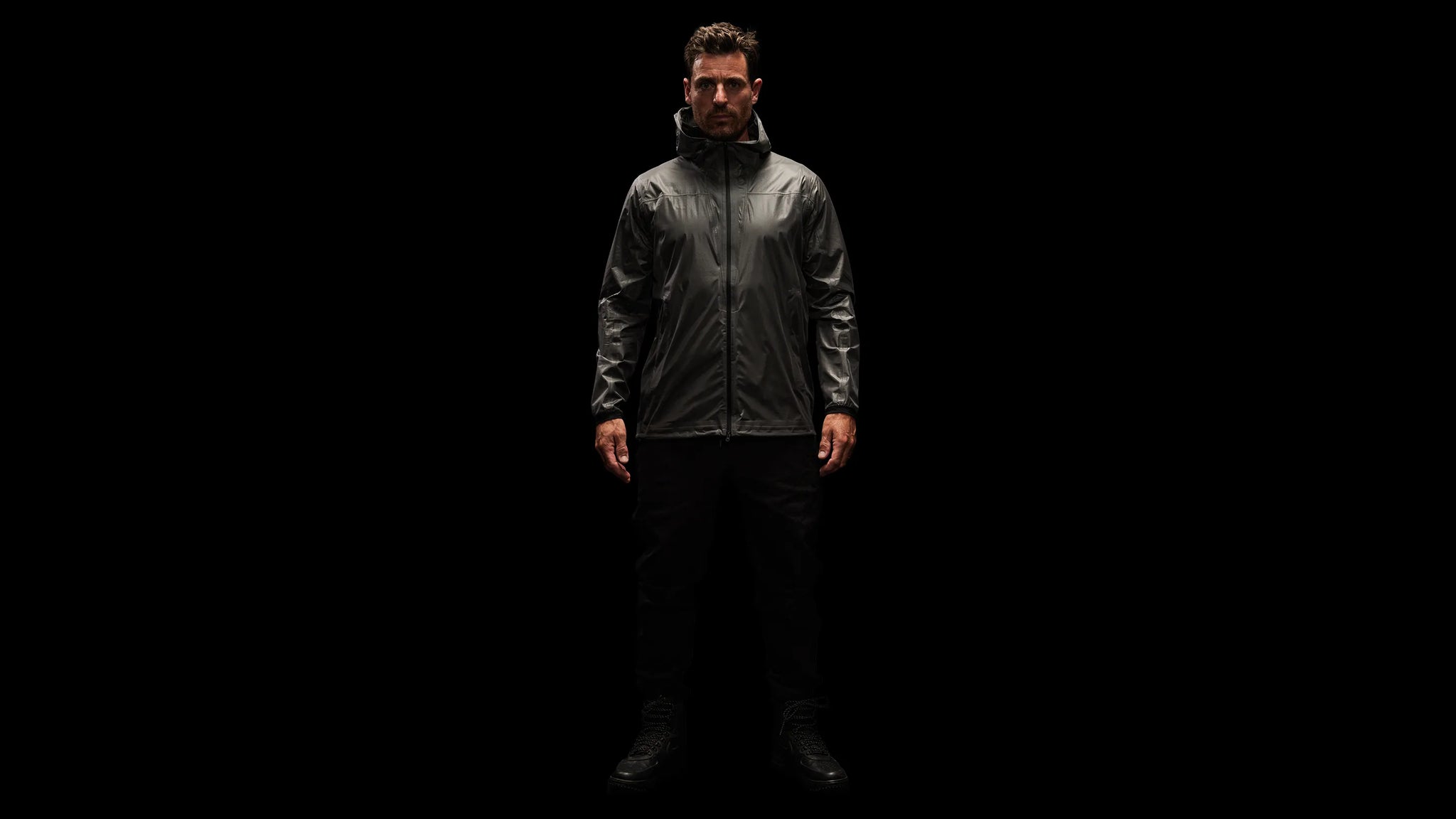


While it’s completely invisible and only a single atom thick, graphene is the lightest, strongest, most conductive material ever discovered.
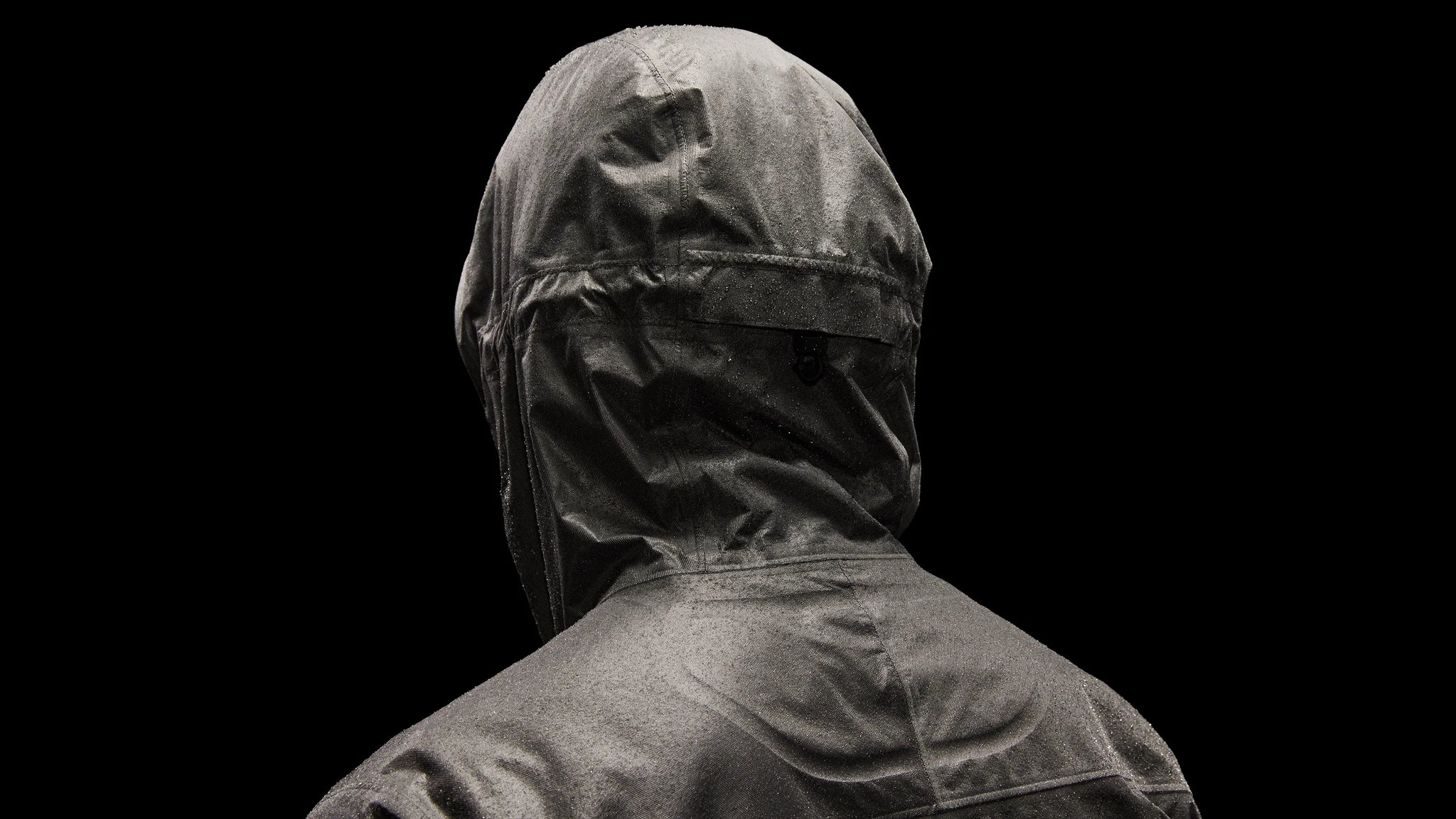

The graphene conducts heat and warms you up
Graphene conducts heat better than any material on Earth. So when you’re wearing the jacket in cold weather it helps equalise your skin temperature by sending heat from the hot bits of your body like your head, to the cold bits like your hands. It’s the first wave of conductive fabrics that will carry heat or electricity around your body but without any power source. Lab tests have shown that the closer to your body the material is, the more effective it will be at regulating your skin temperature and increasing it by an average of 2°C.

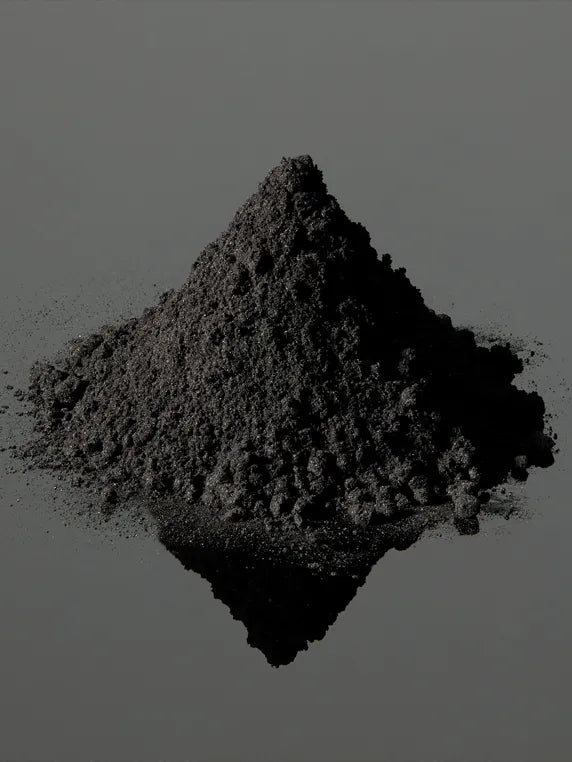
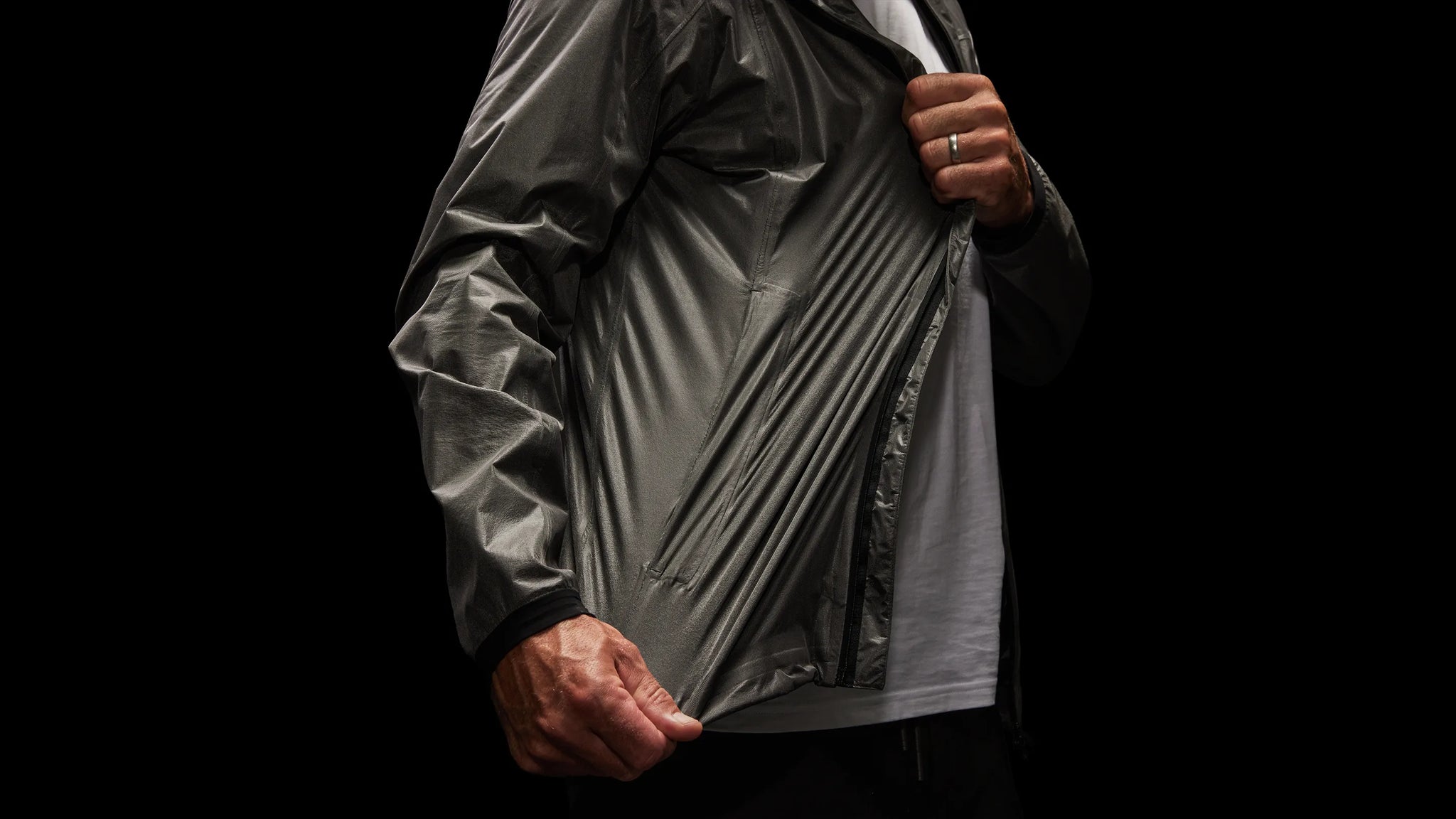
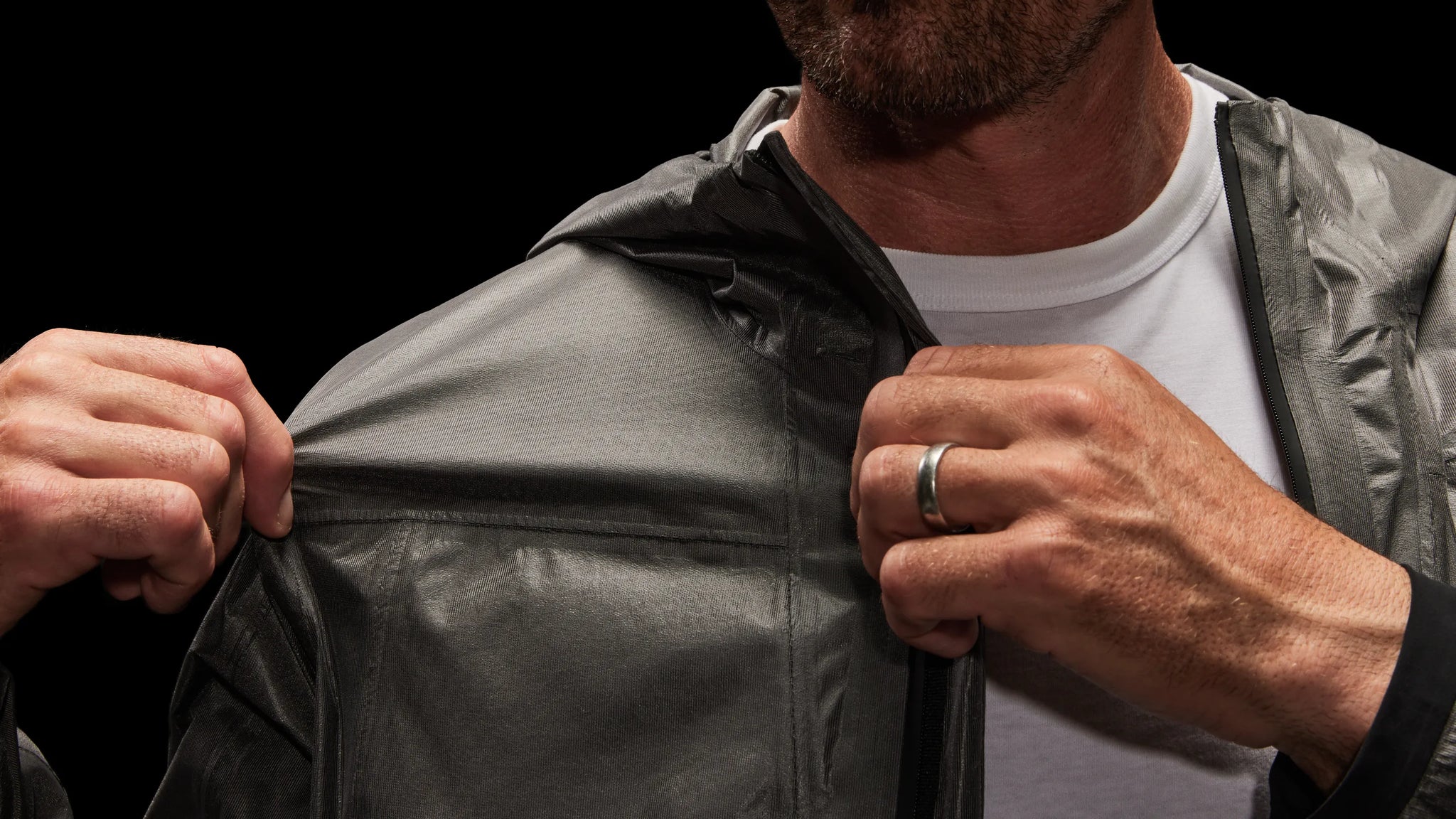
Graphene’s discovery was so mind-blowing it was compared to finding CERN’s Large Hadron Collider on your desk.

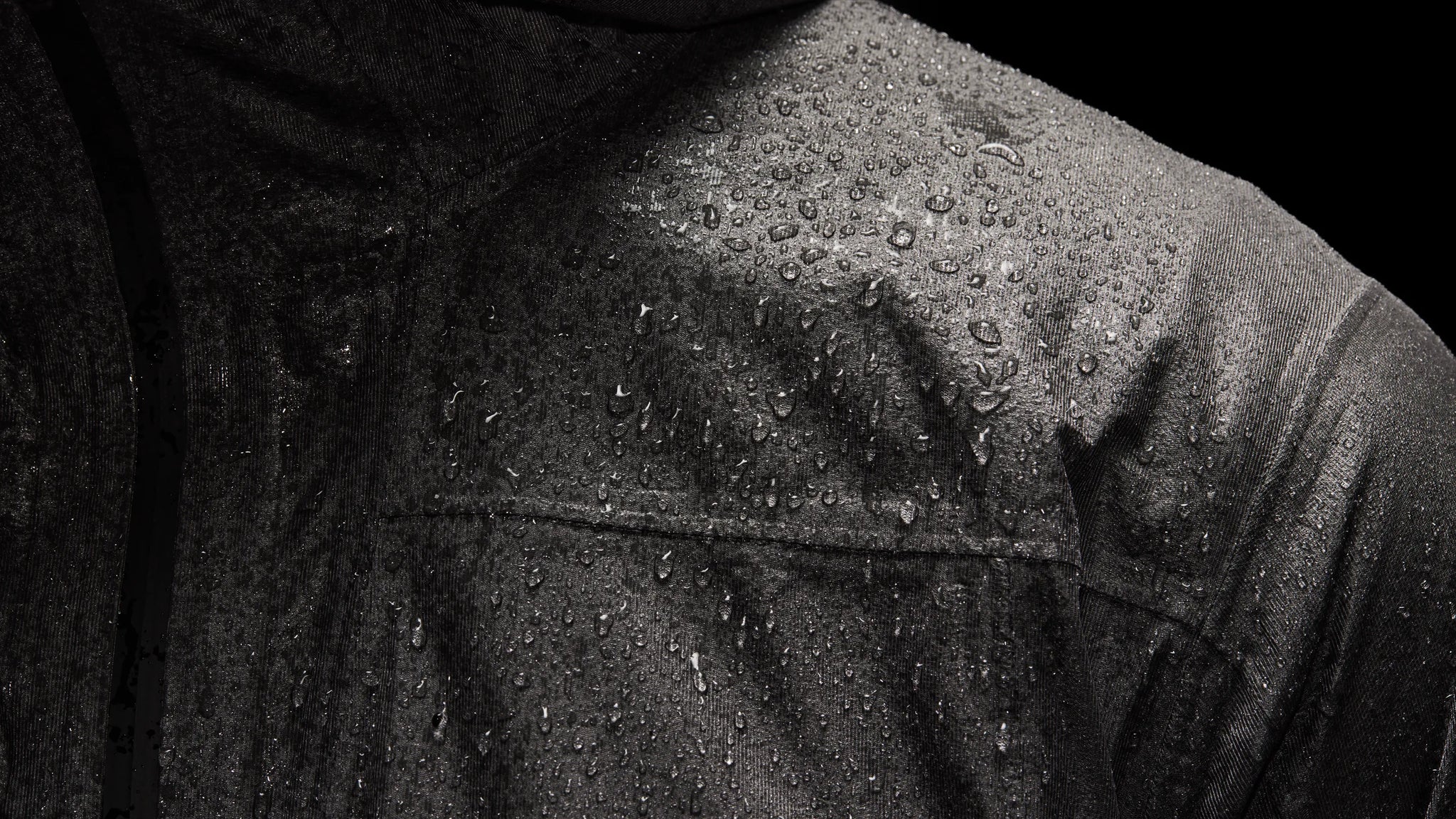
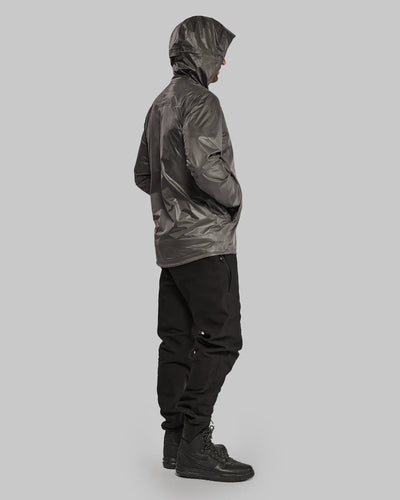
Engineered with weatherproof detailing
Every detail of the jacket has been built to protect you from the weather and keep you comfortable. All the seams are fully sealed for waterproofness. There’s a two-way, water resistant front zipper that you can open and close from the top and the bottom of the jacket. The hem tightens with a cord adjuster over the right hip. And it’s cut with a drop tail shape at the back to help keep you dry in the rain.
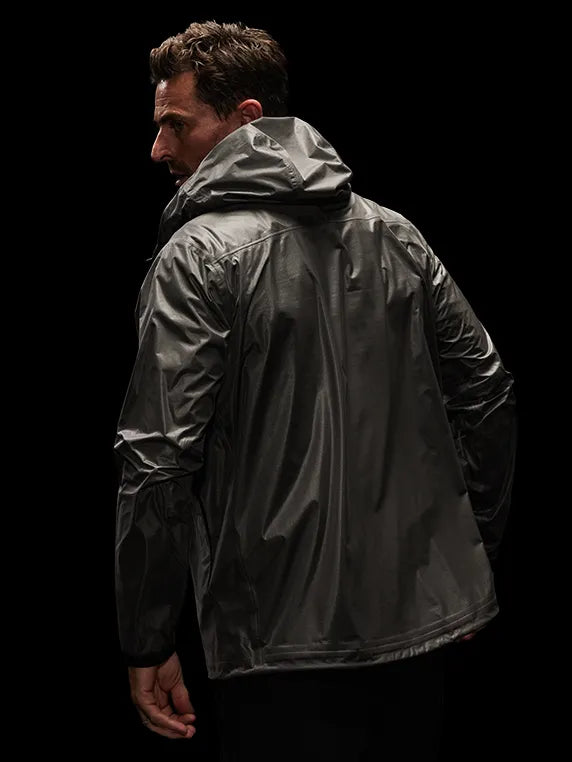
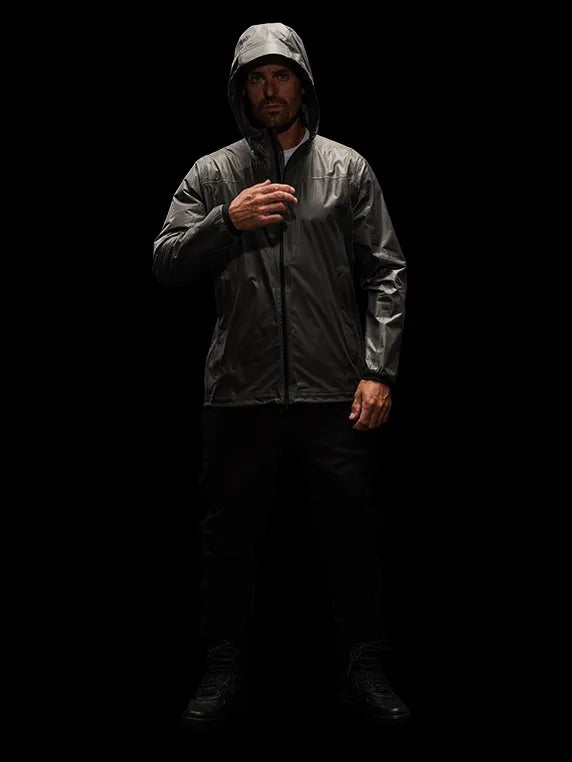
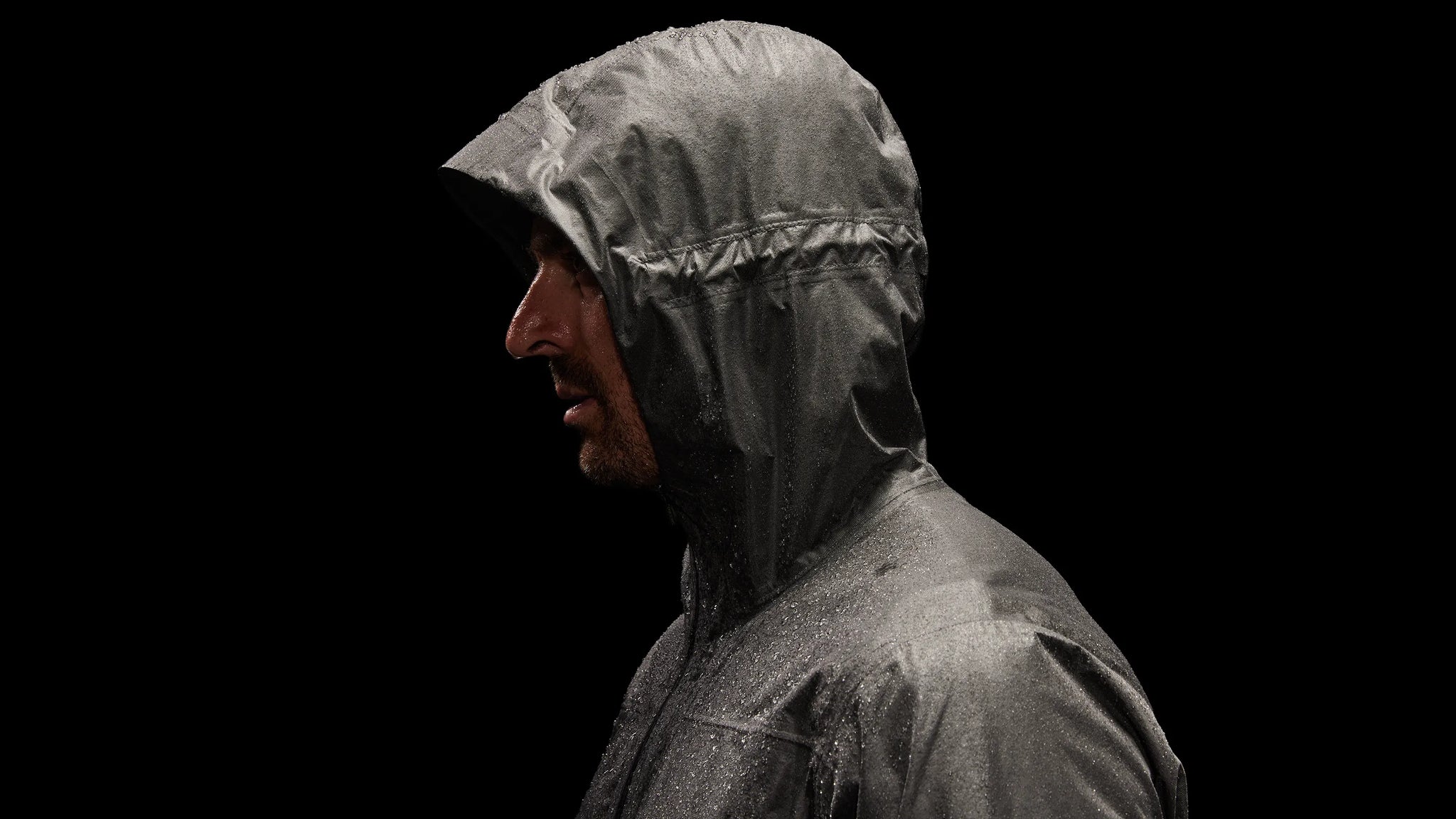
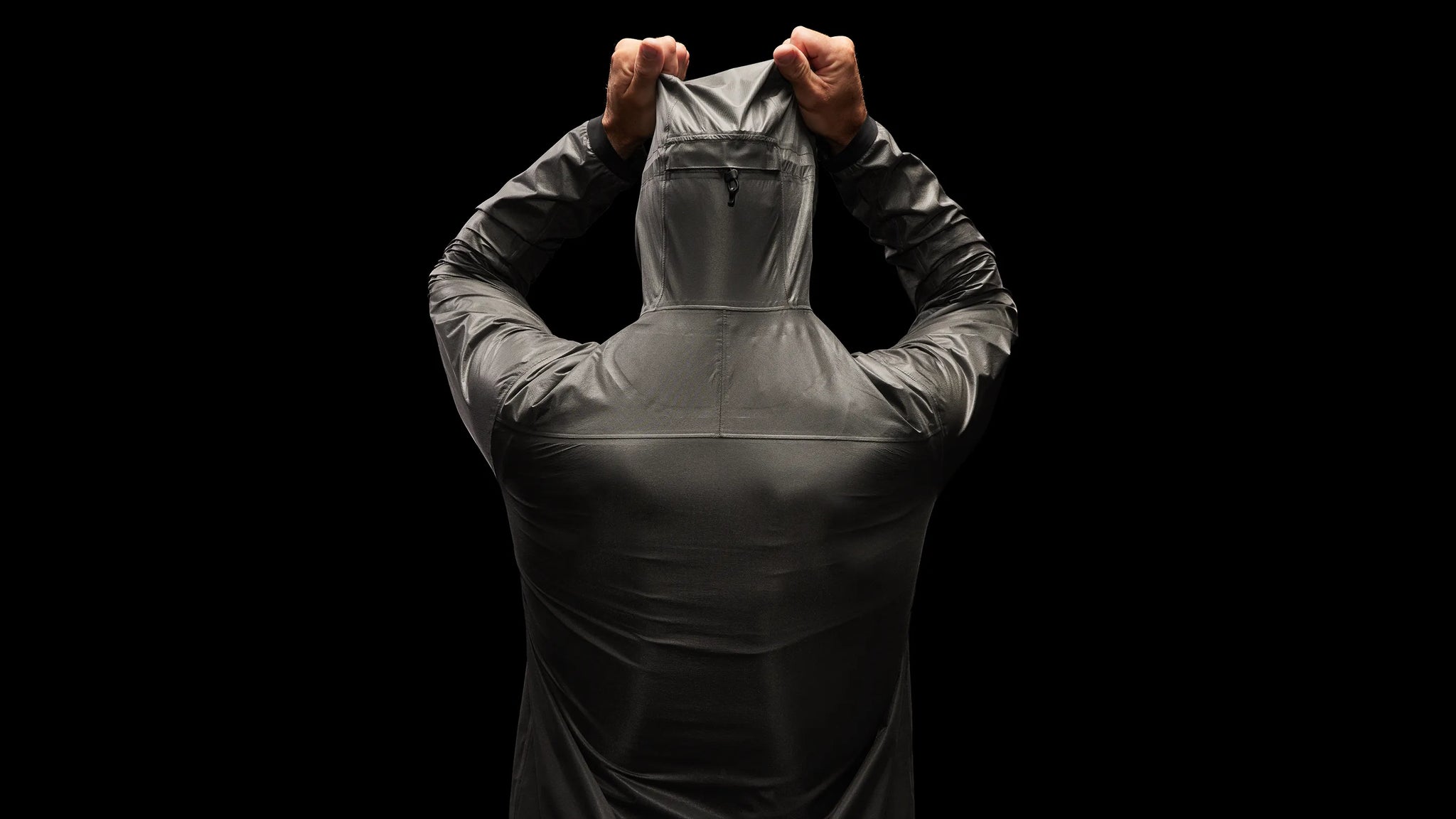
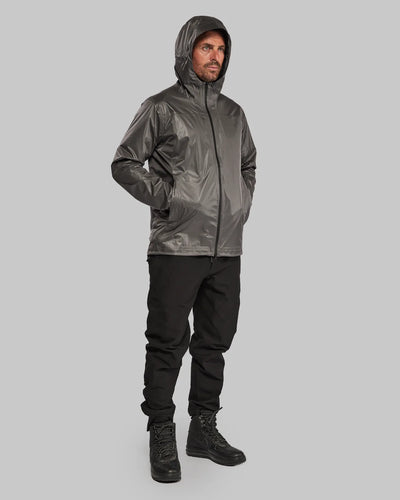
Two hidden zipped pockets
The jacket is fitted with two zipped side pockets that let you comfortably tuck your hands in or securely store phones, wallets and keys. The zippers are water resistant and lock into place. And each one is hidden and protected by a strip of graphene fabric so they blend in with the rest of the jacket.
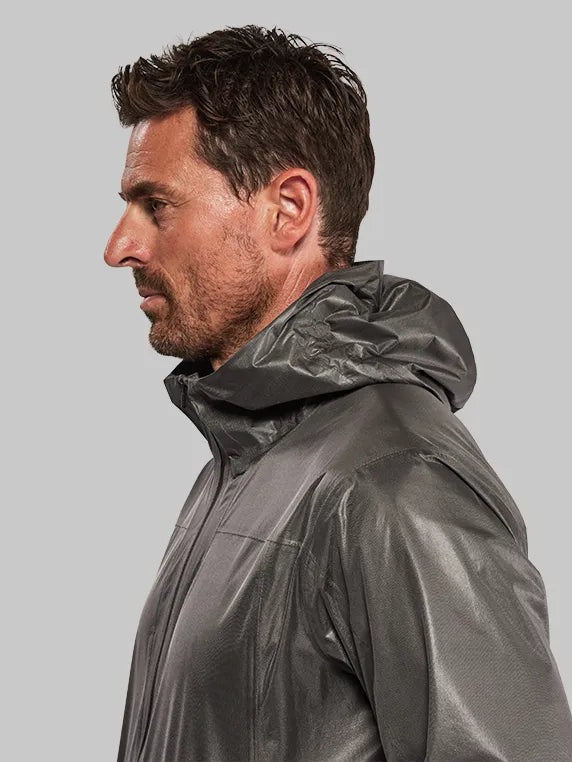
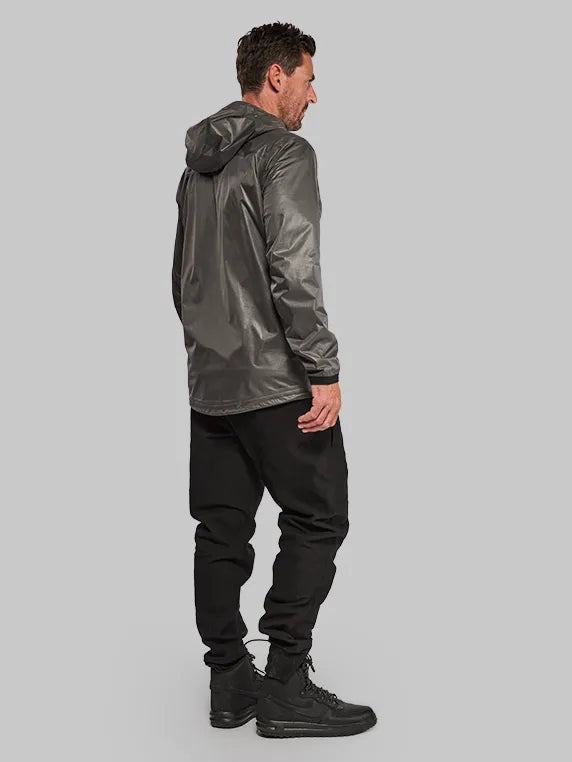
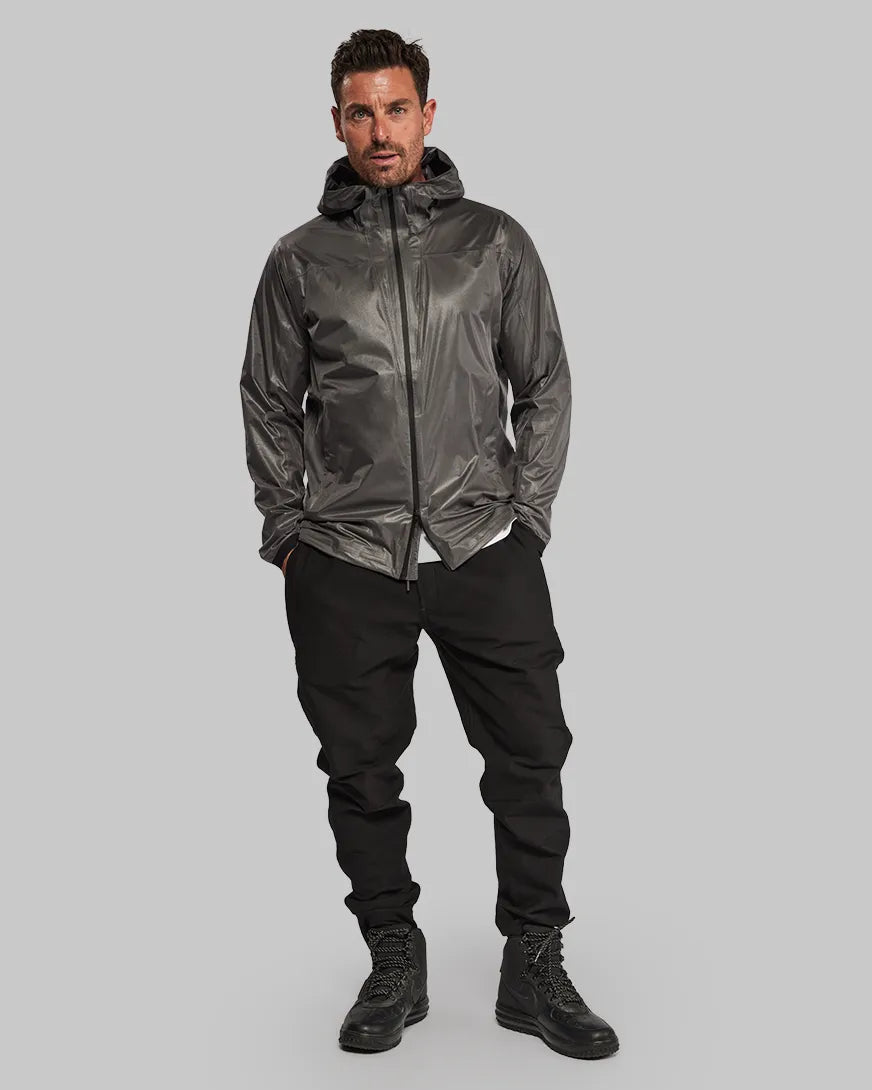
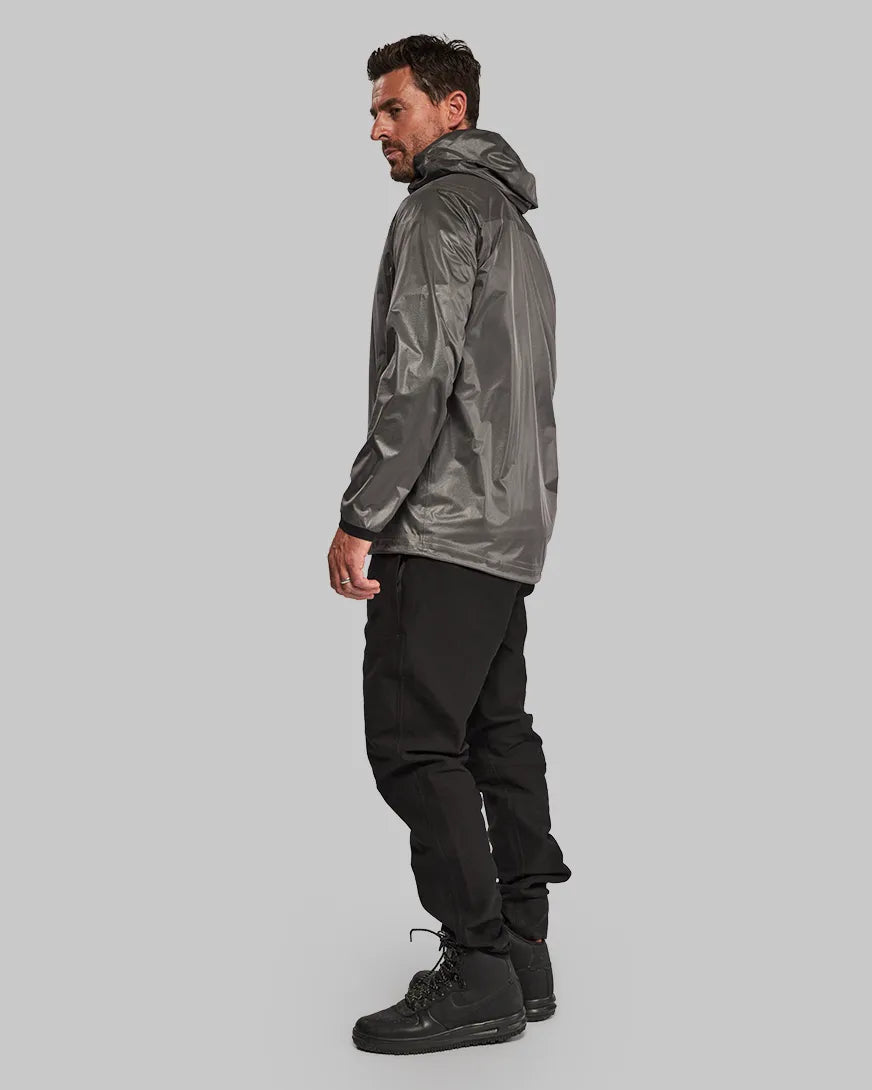
Size + Fit
The Graphene Jacket has a regular fit.
| Size | XS | S | M | L | XL | XXL |
| Fits chest | 83 - 90 | 91 - 98 | 99 - 106 | 107 - 114 | 115 - 122 | 123 - 130 |
| Fits waist | 71 - 76 | 76 - 81 | 81 - 86 | 86 - 91 | 91 - 96 | 96 - 101 |
| Size | XS | S | M | L | XL | XXL |
| Fits chest | 33 - 36 | 36 - 39 | 39 - 42 | 42 - 45 | 45 - 48 | 48 - 51 |
| Fits waist | 28 - 30 | 30 - 32 | 32 - 34 | 34 - 36 | 36 - 38 | 38 - 40 |






